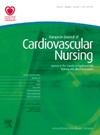通过分析社交媒体论坛评估植入左心室辅助装置的患者的信息需求
IF 2.9
3区 医学
Q2 CARDIAC & CARDIOVASCULAR SYSTEMS
引用次数: 0
摘要
背景 左心室辅助装置(LVAD)是对最大限度药物治疗反应不佳的终末期心力衰竭患者的一种可行的替代治疗方法。越来越多的终末期心力衰竭患者(包括 LVAD 植入前后的患者)正在利用社交媒体寻找医疗信息和同伴支持。目的 本研究旨在通过社交媒体的互动,确定 LVAD 患者尚未满足的教育和信息需求。方法 本研究通过自动提取技术从 MyLVAD.com 网站的论坛部分收集信息。我们对 MyLVAD.com 的数据集进行了匿名收集和分析,该数据集包括整个论坛的 459 个主题和 3886 条信息,由 945 名独立用户贡献。为了建立一个针对现有信息和教育需求的矩阵,我们检查了包含问题和询问的 867 个帖子和对话,最终确定了总共 435 个具体问题。我们制定并更新了一系列分类矩阵,以便于发现新的类别。结果 在以下方面发现了许多信息空白和未解答的问题:服装、并发症/不良事件、LVAD 的利弊、自我护理、治疗和最近的 LVAD 植入。在 435 个问题中,有 216 个(占 49.7%)问题的主要重点是 LVAD 患者的自我护理,包括管理动力线部位、了解设备功能、调整生活习惯以确保使用 LVAD 期间的安全和健康等主题。另外还出现了两个主要问题类别:关于并发症/不良反应的问题有 80 个,占 18.4%;讨论 LVAD 利弊的问题有 67 个,占 15.4%。结论 从 MyLVAD.com 上获取的社交媒体数据首次被用于评估植入 LVAD 患者未满足的需求和知识差距,并对 LVAD 患者的知识和信息需求进行分类。与研究人员生成的数据不同,社交媒体数据反映的是患者之间自然、有机的对话,不受研究人员议程或偏见的影响。社交媒体数据可以增强我们对患者信息缺陷的了解。这可以帮助我们制作专门的材料,以满足未得到满足的教育需求。本文章由计算机程序翻译,如有差异,请以英文原文为准。
Assessing the information needs of patients implanted with a left ventricular assist device via analysis of social media forums
Background Left Ventricular Assist Devices (LVADs) serve as a feasible treatment alternative for patients with end-stage heart failure who do not respond sufficiently to maximal medical therapy. An increasing number of individuals with end-stage heart failure, both pre- and post-LVAD implantation, are utilizing social media to find medical information and peer support. Purpose The objective of this study was to identify unmet education and information needs of patients with LVAD through social media interactions. Methods In this research, information was gathered from the forum section of the website MyLVAD.com through an automated extraction technique. We conducted an anonymous collection and analysis of a dataset from MyLVAD.com, which comprised 459 forum threads and 3886 messages across the entire forum, contributed by 945 unique users. To establish a matrix addressing existing information and educational needs, we examined 867 posts and conversations that contained questions and inquiries, ultimately identifying a total of 435 concrete questions. A series of categorization matrices were developed and updated to facilitate the discovery of new categories. Results Numerous information gaps and unanswered questions were discovered in relation to the following areas: clothing, complications/adverse events, LVAD pros and cons, self-care, therapy, and recent LVAD implantation. Among the 435 questions, 216 (49.7%) questions had a primary focus on self-care for patients with LVAD, including subjects such managing the driveline site, understanding equipment functionality, and adapting lifestyle habits to ensure safety and health while living with an LVAD. Two other major question categories emerged: those regarding complications/adverse effects, comprising 80 questions (18.4%), and those discussing the pros and cons of LVAD, with 67 questions, accounting for 15.4%. Conclusion The social media data retrieved from MyLVAD.com is the first to be used to assess the unmet needs and knowledge gaps among patients implanted with LVAD and develop categories to describe LVAD patient knowledge and information needs. Unlike investigator-generated data, social media data reflect the natural and organic conversation between patients, untainted by investigator agendas or biases. Social media data can enhance our understanding of patient information deficiencies. This can lead to the creation of materials specifically aimed at fulfilling unaddressed educational requirements.Unmet LVAD patients information needs
求助全文
通过发布文献求助,成功后即可免费获取论文全文。
去求助
来源期刊

European Journal of Cardiovascular Nursing
CARDIAC & CARDIOVASCULAR SYSTEMS-NURSING
CiteScore
5.10
自引率
10.30%
发文量
247
审稿时长
6-12 weeks
期刊介绍:
The peer-reviewed journal of the European Society of Cardiology’s Council on Cardiovascular Nursing and Allied Professions (CCNAP) covering the broad field of cardiovascular nursing including chronic and acute care, cardiac rehabilitation, primary and secondary prevention, heart failure, acute coronary syndromes, interventional cardiology, cardiac care, and vascular nursing.
 求助内容:
求助内容: 应助结果提醒方式:
应助结果提醒方式:


